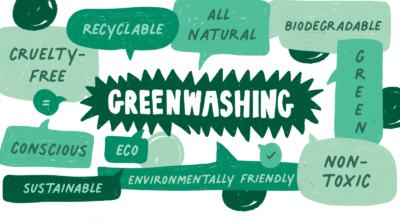Three simple ways to make your clothes last
Aoife details some of the ways she cares for her clothes to make sure they last as long as possible.

A lot of the conversation around sustainable fashion tends to focus on buying. Which brands are the most ethical in their production? Which charity shops are best? Where can I get good vintage clothes? But, while these all have value in a circular economy, and are a great way to expand your wardrobe in the most sustainable way possible, they still create a demand for newness.
Of course, not all your clothes are going to last forever, but a hugely important step in creating a sustainable wardrobe is making sure that you are maximising the life of the clothes that you own. After all, as upcyclist Orsola de Castro said, “the most sustainable clothes are the ones that you already have in your wardrobe”. Here are some tips on how to make your clothes last you for as long as possible.
1. Wash with care
Firstly, make sure you’re washing them properly! We’ve all seen (and probably ignored) fabric care labels on our clothes- they’re basically the instruction book on how to make your clothes last. As a rule of thumb, wash your clothes on as cold a wash as you can and as infrequently as possible. If you’re worried about a cold wash not being enough to kill the germs, you can buy a fabric disinfectant in the laundry aisle of most supermarkets.
Personally, I avoid fabric softener, as prolonged use can actually start to break down the fibres of your clothes, making them much more susceptible to rips and holes. Close zippers and buttons before putting clothes in the wash, to avoid them catching on things and tearing or snagging. When it comes to drying your clothes, air dry as much as you can, and never tumble dry underwear, delicate fabrics, or t-shirts or hoodies with vinyl decals.
2. Inspect before you buy
When you have to buy new clothes, make sure you’re buying stuff that will last you a long time. If you can, try to inspect each item carefully before buying to get an idea of the quality. Pay close attention to the seams and the hems. If the stitching already seems loose or is coming apart, it will not last after a few washes. When it comes to fabrics, check that the item isn’t flimsy or see-through (unless that’s the look you’re going for!). I find natural fabrics such as cotton or wool tend to be durable, although some polyester blends can hold up quite well, too. Generally, I avoid anything that’s 100% polyester or acrylic. Not only do they tend to be poorly made, they also shed tiny microplastics in the wash that can harm the ocean’s ecosystem.
3. Learn some simple sewing techniques
Even if you’re not a master seamstress, it’s always a good idea to learn a few simple repairs, just in case. There’s plenty of tutorials on YouTube, and a basic sewing kit can be found relatively cheaply. There’s no need to throw out a piece of clothing on account of a missing button, or a broken zipper, or an easily patched hole. Having some basic sewing skills under your belt can also come in handy when you want to alter or customise an item of clothing that you’ve grown bored of.
All things considered
The bottom line is, there’s no point in going huge lengths to ethically source your clothes from the most eco-friendly brands out there, or spend hours in charity shops trying to find the perfect piece if you’re not going to put the work in to make sure that those clothes stand the test of time.
In a circular economy, it’s important that your clothes last for as long as you want to wear them, but also well beyond, as you pass them on to the next person who will continue to get use out of them.






